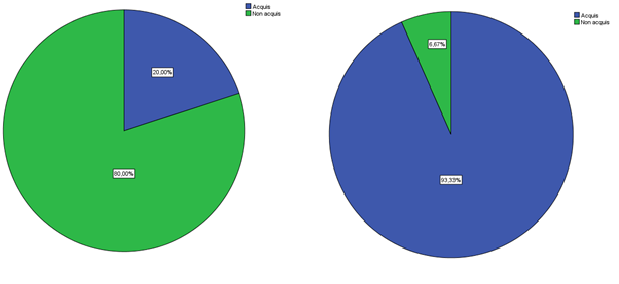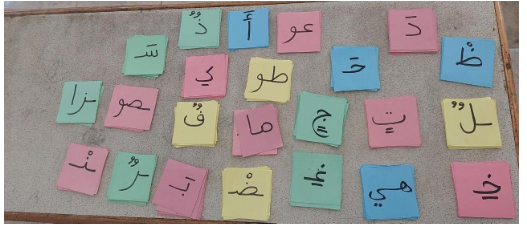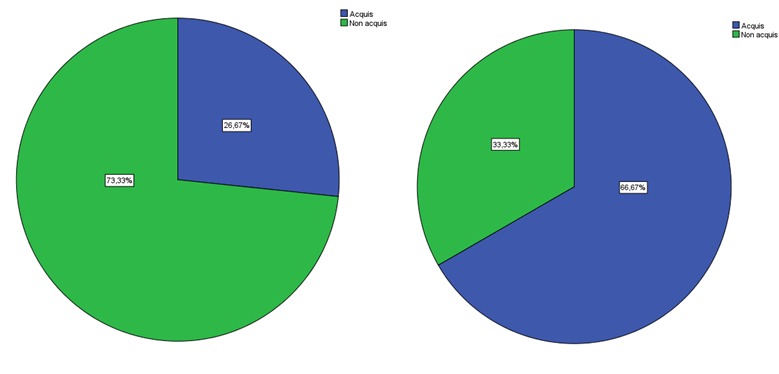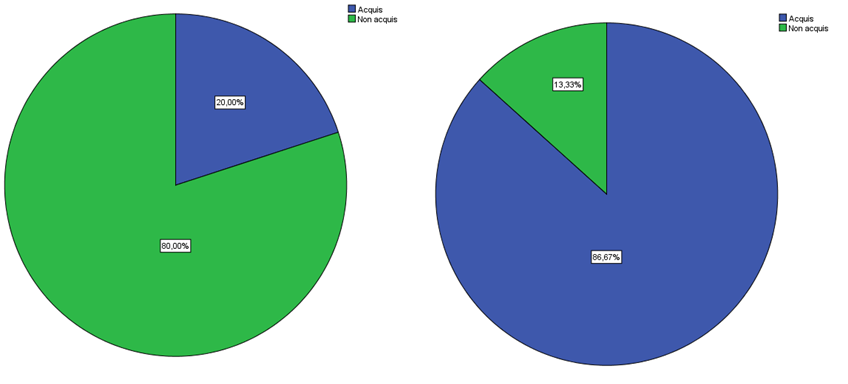The contribution of playful activities in learning among primary school learners
Adil Boulahouajeb1*, Fatima Hassine2, Mohammed El Felhi3, Jabran Daaif4
1Regional Center for Education and Training Professions Casablanca-Settat, El Jadida, Morocco
2Laboratory of Physical Chemistry of Materials LPCM, Ben M’Sick Faculty of Sciences, Hassan II University of Casablanca, Morocco.
3Laboratory of Sciences and Technologies of information and Education LSTIE, Ben M’Sick Faculty of Sciences. Hassan II University of Casablanca, Morocco.
4Higher School of Education and Training of Berrechid, Hassan First University, Morocco
E-mail: adil.nizar24@gmail.com
HNSJ, 2024, 5(6); https://doi.org/10.53796/hnsj56/19
Published at 01/06/2024 Accepted at 20/05/2024
Abstract
The article examines the importance of playful activities in primary education, highlighting the challenges teachers face in meeting the varied needs of students while achieving learning goals. It highlights the crucial role of student motivation in their commitment and success, as well as the observation that playful activities generate greater interest and concentration among students compared to traditional teaching methods. The article proposes an action research aimed at demonstrating the effectiveness of playful activities in school learning, particularly in primary schools. The methodology adopted includes a phase of diagnosis, integration and evaluation, with the aim of understanding the needs of students, incorporating playful activities into their teaching, and evaluating their impact on their learning. By analyzing the data collected, the article concludes that the integration of fun activities significantly improves the assimilation of the concepts studied, stimulating student engagement and motivation and promoting better knowledge retention. Finally, it stresses the importance of continuing research in this area to explore other concepts and subjects that may benefit from the integration of fun activities, as well as to assess the longer-term effect of this approach on student learning.
Key Words: playful activities, primary education, student motivation, learning effectiveness, knowledge retention
عنوان البحث
مساهمة الأنشطة الترفيهية في التعلم بين تلاميذ المدارس الابتدائية
تاريخ النشر: 01/06/2024م تاريخ القبول: 20/05/2024م
المستخلص
يتناول المقال أهمية الأنشطة الترفيهية في التعليم الابتدائي، مسلطاً الضوء على التحديات التي يواجهها المعلمون في تلبية احتياجات الطلاب المتنوعة أثناء تحقيق أهداف التعلم. ويبرز الدور الحاسم لدافعية الطلاب في التزامهم ونجاحهم، وكذلك الملاحظة التي تشير إلى أن الأنشطة الترفيهية تولد اهتماماً وتركيزاً أكبر لدى الطلاب مقارنة بأساليب التدريس التقليدية. يقترح المقال بحثاً عملياً يهدف إلى إظهار فعالية الأنشطة الترفيهية في التعلم المدرسي، لا سيما في المدارس الابتدائية. تتضمن المنهجية المتبعة مرحلة تشخيص ودمج وتقييم، بهدف فهم احتياجات الطلاب، ودمج الأنشطة الترفيهية في تعليمهم، وتقييم تأثيرها على تعلمهم. من خلال تحليل البيانات التي تم جمعها، يستنتج المقال أن دمج الأنشطة الممتعة يحسن بشكل كبير استيعاب المفاهيم المدروسة، مما يحفز التفاعل والدافعية لدى الطلاب ويعزز الاحتفاظ بالمعرفة بشكل أفضل. وأخيراً، يؤكد المقال على أهمية مواصلة البحث في هذا المجال لاستكشاف مفاهيم وموضوعات أخرى قد تستفيد من دمج الأنشطة الترفيهية، وكذلك لتقييم التأثير طويل الأمد لهذا النهج على تعلم الطلاب.
الكلمات المفتاحية: الأنشطة الترفيهية، التعليم الابتدائي، دافعية الطلاب، فعالية التعلم، الاحتفاظ بالمعرفة
- Introduction and Problematic
In the field of teaching, the quest for an effective teaching method remains a major challenge for teachers. Indeed, they must reconcile the expectations and the varied needs of their students while achieving the objectives previously set in class. This involves overcoming various difficulties, such as acquiring appropriate teaching materials and designing activities to facilitate learning.
The engagement and success of learners depends largely on their motivation. Thus, teachers are responsible for creating an environment conducive to learning by setting up sessions that actively encourage students to get involved in their own learning process.
The motivation for this study stems from our observation that students show greater motivation and concentration when engaged in playful classroom activities, unlike traditional teaching. This underscores the importance of seeking innovative pedagogical approaches to stimulate learner interest and participation.
In addition, the playful activity provides the teacher with both the tool of a better knowledge of the learner and that of a renewal and a change of pedagogical methods as stated by Jean-Marc Caré “I do not see the game as something free. In pedagogy, play is always considered recreational […], while we know that it can be a technique of learning in its own right.”
Our action research revolves around a primary objective: to demonstrate the power of stimulating activities in the learning process, while transforming the classroom environment into a pleasant and captivating place, without requiring complex teacher-student interactions. With this in mind, our study offers a wide range of fun activities to enrich the student learning experience
What distinguishes our action research is its remarkable flexibility. We have identified several practical activities that can be adapted to various educational contexts. Thus, by opting for flexible teaching tools and adaptive methods, we are able to entertain and stimulate learners, thus promoting engagement in the learning process, and facilitating the assimilation of different knowledge and also the achievement of the set objectives.
Our research focuses on the exploration and analysis of pedagogical practices involving the use of playful activities in schools, especially in primary schools. We seek to deepen our understanding of the benefits and impacts of these activities on teaching and learning.
By closely examining the integration of playful activities into the educational framework, we seek to identify the different forms that these activities can take, such as role-playing, educational society games, problem-solving activities and others. We also aim to assess how these activities influence not only student engagement and motivation, but also their understanding of the concepts taught, their information retention and their development of transversal skills such as collaboration, communication and critical thinking.
Through this research work we will try to answer the following questions: What is the contribution of playful activities in learning among primary school students? How do fun activities impact students’ learning in primary school? How effective are these activities in learning?
To answer these questions we propose the following hypothesis: The use of playful activities in teaching learning could arouse in the little learners an interest and a pleasure that can encourage them to express themselves and to learn.
- Methodology
To carry out our study, we have adopted a methodological approach that involves the observation and analysis of two distinct groups of learners: first-year primary and fifth-year students. It is important to note that these two groups are heterogeneous, that is, they have a diversity in terms of skill levels, learning styles, socio-economic contexts and previous educational pathways.
We followed a methodological process organized in three stages: diagnosis, integration and evaluation. This approach was developed to understand the specific needs and skill levels of students, incorporate playful activities into their teaching, and then assess the impact of these activities on their learning.
In the diagnostic phase, we undertook initial assessments to assess students’ skills, interests and learning needs in each group. This included standardized play activities, classroom observations. The objective was to obtain precise data on the strengths and weaknesses of each group, as well as on their receptivity to recreational activities.
Following this evaluation, in the integration phase, we designed and implemented fun activities adapted to each group. These activities were integrated into the existing curriculum, taking into account the specific learning objectives of each school year.
Finally, in the evaluation phase, we measured the impact of fun activities on student learning. This was achieved by comparing performance before and after activities through various methods such as standardized assessments, classroom observations and feedback from students. We also assessed students’ satisfaction with playful activities and their perception of their effectiveness in learning.
- Theoretical framework
Learning, as defined by Landsheere (1979), is a complex and dynamic process, involving the acquisition of new behaviours or the modification of those already existing in interaction with the environment. This definition highlights the importance of interaction between the individual and his environment in the learning process.
Beillerot (1989) deepens this idea by pointing out that learning is a process by which the learner creates internal knowledge that allows him to think and act independently. Thus, learning is not limited to the acquisition of external knowledge, but also involves an internal transformation of thought and action.
Delevay (1992) brings a nuance by considering learning as a process of psychic transformation of the individual. According to this perspective, learning occurs when a person comes into contact with external elements, which leads to an evolution of his cognitive structure.
Legendre (1993) further expands this vision by describing learning as a global act of perception, interaction and integration between subject and object. This definition highlights the idea that learning is not limited to the acquisition of knowledge, but also includes the development of skills, attitudes and values that enrich the individual’s cognitive structure.
Finally, Vienneau (2011) emphasizes the active and constructive nature of learning, defining it as an internal, interactive, cumulative and multi-directional process. This conception highlights the central role of the learner in the active construction of his own knowledge, highlighting the importance of his commitment and involvement in the learning process.
In 1911, Jeanne Girard, Inspector of Kindergartens of the Seine, expressed the importance of play in education by merging the playful innocence of the child with the educational objectives of the school. Girard sees educational play as an opportunity for children to act, learn and educate themselves unconsciously through activities that prepare them for the effort of future work (Girard, 1911).
Over the centuries, many educators have exploited this vision by integrating play into the learning process. In the eighteenth century, Rousseau, through his treatise on education ‘Émile’, put forward a playful approach to learning. Similarly, Madame de Genlis, in the same century, made play a central pedagogical principle during her role as an educator.
The nineteenth century saw an evolution where the game emerged as a serious learning tool, especially with the New Education movement. Pioneers of this movement, Cohen and Pestalozzi, influenced by Rousseau’s ideas, introduced play in education, giving birth to the New School. This allows learners to actively participate in their own training, fostering cooperation and the integration of individual interests into the educational process.
Contemporary theorists such as Roger Cousinet, Célestin and Elise Freinet, and Maria Montessori have also made significant contributions to thinking about play in learning. They developed educational methods focused on learner autonomy, creative freedom and the importance of play in the overall development of the child.
Darwin’s work paved the way for research by Piaget and Groos, highlighting the innate importance of play in human learning. Moreover, psychoanalysts such as Freud, Klein and Winicott have shown that child play is an essential basis for psychological development.
Finally, Pauline Kergomard played a crucial role in emphasizing the central role of play in pedagogy, transforming the asylums into kindergartens where play was considered the first work of the child.
Today, playful activities continue to play a vital role in primary education, offering children a stimulating and engaging way to learn. According to Jean Pierre Cuq, playful activities guide learners through rules of the game, promoting communication, creativity and decision-making, while directing them towards learning objectives (Cuq, 1998). In short, recreational activities are an effective educational tool to motivate children and promote their cognitive and social development.
Fun activities, such as educational games and songs, are moments of relaxation and fun integrated into learning. It is important to note that it is not so much the activity itself that is playful, but rather the attitude and the course that make it so. These activities play an indispensable role in making teaching and learning more interesting and less boring, as Pablo Neruda points out: «The child who does not play is not a child, but the man who does not play has lost the child who lived in him».
Games are an integral part of our lives and are of paramount importance to all strata of society, creating new situations and solving various problems. They offer us the opportunity to escape the monotony of the classroom, to experiment, imagine, create, test our abilities and solve problems.
As for the different phases of learning, the acquisition phase represents the path that all information takes from its perception by sensory memory to its understanding or representation in short-term memory. The teacher must then plan, structure and animate a teaching sequence allowing the learner to capture and analyze the information according to his previous knowledge, thus promoting appropriate understanding and production.
The systematization phase, on the other hand, involves the maintenance of the acquired behavior during subsequent episodes in the presence of the task or behavioral opportunity. Its objective is to check whether behavioral performance remains stable after an absence of stimulation or a period of practice spacing.
Finally, the activities of use are communicative activities simultaneously involving the different components of the discourse, both in comprehension and expression, in conditions as realistic as possible. They serve as a basis for assessing the ability to communicate and can also allow a return to observation or systematization activities if necessary.
- Results
In this section, we present the various experimental activities we have used to examine and enlighten the influence, role and positive effects of play activities on primary school learning. After the learning sessions, we noted some difficulties in acquiring certain concepts. Finally, the comparison of results before and after the activities will be particularly instructive, because it will allow us to assess the impact of recreational activities on learning.
To ensure the reliability of our research results, we made sure to diversify the sample by choosing first and fifth grade classes in two separate primary schools: Sidi Abdellah ben Youssef school and Sidi Amhamed akhdim school. In the first few months, we opted for a traditional teaching method for both groups, but the results showed that the learning objectives had not been achieved and that the students had not assimilated the intended concepts. Therefore, we decided to move to a playful approach for a defined period, using playful activities based on educational games adapted to the set learning objectives. Based on tests and assessment grids, we compared the students’ results to assess the development of their learning with and without the integration of playful activities. Table 1 represents the description and objectives of the recreational activities operated.
Table 1. Description and objectives of the recreational activities operated.
| Activities | Description | Objectives |
| Crocodile comparison | The crocodile numbers comparison exercise is designed for first-year primary school children. The opening of the mouth of the crocodile is therefore always turned towards the largest number. This activity concerns learners in the first year of primary school | Facilitate understanding of the concept of comparison.
Help not to confuse between signs: bigger than and smaller than. Motivate the learner and make the subject (mathematics) more fun |
| Card games | This deck of cards is about reading. It consists of cutting the word into syllables and looking for each syllable in the cards placed on the table and pasting it to the board. | Help learners to memorize letters and their writing methods in the middle and end of words. Also reading the words by practicing cutting several times until what becomes an automatic procedure in their brains.
writing. |
| Theatrical piece | Our activity is based on games derived from the theatre that transforms the class into a theatrical stage, and the students will be actors | Facilitate the acquisition of certain concepts through role-playing
Leaving the classical framework of learning Control the volume of the voice, the flow, the gesture and the look. Correct pronunciation and articulation problems. |

Figure 1. Fun Activity 1: Crocodile Comparison
According to Figure 1, to make it easier to learn how to compare numbers in the first year of primary school, various supports and tools can be used. Among these, number cards are an essential element. These cards allow students to visualize numbers and manipulate them physically, which promotes a deeper understanding of the concepts discussed. In addition, cards representing comparison symbols (<, >, =) presented in the form of a crocodile can be particularly effective. These playful and visual cards capture children’s attention while helping them intuitively associate crocodile behavior with the notion of comparing numbers. This combination of teaching materials offers students an interactive and stimulating learning experience, facilitating their understanding and mastery of number comparison concepts.
Diagnostic phase
During the first unit I adopted the classical teaching method. The fourth week of the unit had the lesson of comparing numbers, learners began to have some difficulties to decipher the concept of comparison and in the first control most could not respond to the comparison exercises.
Integration phase
After noticing that most learners have not yet acquired the concept of comparison I decided to go for the playful approach and use the game of comparison with the crocodile as explained below.Haut du formulaire
Evaluation phase
The second control was like an evaluation of the impact of the playful approach on the acquisition of the concept of comparison.

Figure 2. Comparison of students’ level of acquisition after and before adopting the playful approach.
According to Figure 2, before integrating the playful approach, only 20% of learners were able to respond to the comparison exercises in the control. After adopting the playful approach, more than 93% of learners managed to respond to the comparison exercises in the second control.

Figure 3. Fun activity 2: Card games
Diagnostic phase
At the beginning of the semester, one of the priority objectives was to develop students’ ability to read words independently. To achieve this goal, I decided to adopt a traditional teaching approach. However, by analyzing the observations I collected using my assessment grid, it is clear that all learners still have difficulty reading a word independently (Figure 3).
Integration phase
To overcome the difficulties encountered I adopted the playful approach, more specifically the card game as explained below.
Evaluation phase
To assess the impact of the playful approach on the achievement of the highlighted objective, I kept the same evaluation grid that I used in the diagnostic phase.

Figure 4. Comparison of students’ level of acquisition after and before adopting the playful approach.
According to Figure 4, before opting for the playful approach, just 27% of learners were able to read a word independently, so the goal was not reached at all. After adopting the playful approach and integrating the card game, 67% of learners are finally able to read a word independently.
Fun Activity 3: Theatre Play
Diagnostic phase
Initially, we chose to use a teacher-centred pedagogical approach, especially a direct teaching method. This method involves the teacher standing in front of the class to provide information, giving clear and guided lectures to the students.
Integration phase
To improve the understanding and memorization of the chosen piece, we introduced a first integration step consisting of using images representing the objects and themes addressed. These visual illustrations are intended to facilitate access to meaning for learners, allowing them to better understand and retain the content of the piece.
As part of this approach, the teacher will use images and gestures that children can understand to explain the meaning of the play. He will also ask questions to check their understanding throughout the process.
Haut du formulaire
Evaluation phase

Figure 5. Comparison of students’ level of acquisition after and before adopting the playful approach.
According to Figure 5, before opting for the playful approach, just 20% of learners were able to understand the play, so the goal was not reached at all. After adopting the playful approach and integrating the card game, 87% of learners are finally able to read a word independently.
The data analysis of this study highlights the significant impact of the playful approach on the assimilation of the concepts examined. These results clearly highlight that the integration of fun activities has been a major catalyst in improving learning. By providing a more dynamic and enjoyable environment, this approach has generated strong engagement and motivation among learners, resulting in superior performance. The playful nature of the activities has not only made learning more attractive, but has also promoted better knowledge retention. By simplifying the understanding of the concepts studied, it facilitated their integration more effectively. These findings highlight the importance of rethinking teaching methods to include more playful elements, thus offering considerable potential for optimizing the learning process.
- Conclusion
The results of our action research have highlighted the crucial importance of playful activities in the learning process at the primary level. They fully confirmed our initial hypothesis that the introduction of playful activities in teaching can arouse in young learners an increased interest and a real pleasure to learn.
The positive impact of the various playful activities implemented was significant in the acquisition of specific concepts. For example, interactive games have greatly facilitated the understanding of the concept of comparison, while the use of card games has improved the skills of reading and cutting words into syllables, thus promoting more autonomous reading. In addition, activities such as theatre and card games have led to a better understanding of more complex concepts, such as the formulation of the verb’s object name and past participle.
By creating an interactive, engaging and motivating learning environment, the fun activities stimulated active participation of learners. The latter showed increased enthusiasm, increased concentration and increased involvement in playful learning sessions, compared to traditional teaching methods. This approach has made learning more attractive and enjoyable for students, thus promoting better knowledge retention.
It is essential to note that the integration of playful activities is not intended to replace direct teaching, but rather to complement it effectively. Thus, these activities must be carefully planned and structured in order to achieve specific learning objectives while providing an entertaining and stimulating environment.
In conclusion, the use of fun activities in primary education makes it possible to reconcile fun and learning harmoniously. Teachers play a crucial role in this integration by adapting these activities to their pedagogical practice, which promotes the motivation, engagement and success of learners. It also requires access to adequate educational resources and appropriate training on the effective use of play activities.
By continuing to explore this field, it would be relevant to study other concepts and subjects that could benefit from the integration of recreational activities. In addition, a longitudinal study would assess the longer-term effect of using such activities on student learning.
References
- Play in Learning and Teaching: Disciplinary Perspectives” édité par D. Henricks et T.S. Henricks (2014)
- The Power of Play: Learning What Comes Naturally” de David Elkind (2007)
- Learning through Play: Teaching and Playing in Early Childhood Education” de D. Kuschner (2012)
- The Benefits of Play in Early Childhood Education” par T. Eberle dans le American Journal of Play (2014)
- Playful Learning and Montessori Education” par A. Lillard dans le Frontiers in Psychology (2013)
- Integrating Play-Based Learning into Classroom Instruction” par M. Pyle et J.L. Danniels dans l’Early Childhood Education Journal (2017)
- Play-Based Learning in the Primary Grades” par le Ministère de l’Éducation de l’Ontario (2016)
- The Importance of Play in Early Childhood Education” par l’OCDE (2018)
- The Role of Play in Children’s Learning” par la National Association for the Education of Young Children (2009)
